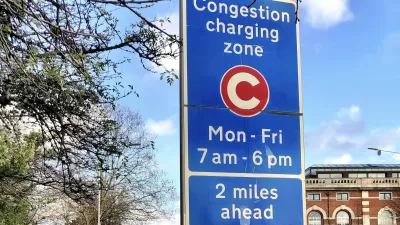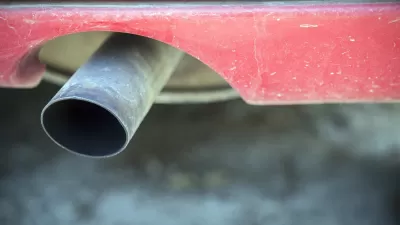It took an act of the Supreme Court for India to address the incredibly unhealthy levels of particulate matter in New Delhi. New rules are aimed at diesel cars, SUVs, and taxis. In Beijing, pollution triggered a red alert for only the second time.
To some extent, it's a tale of two of most heavily polluted capitals, with one grabbing the world's attention and implementing strategies to reduce emissions, while the other has gone to some degree unnoticed, and appears to be dragging its feet to reduce pollution.
"The Supreme Court of India ordered several transportation restrictions in the nation’s capital on (December 16) to help curb pollution, issuing a temporary ban on the registration of some diesel cars and setting a time frame for all taxis in the region to switch to compressed natural gas," writes Nida Najar for The New York Times.
The new restrictions are “a first step,” said Anumita Roychowdhury, the executive director of the Center for Science and Environment, [a public interest research and advocacy organisation based in New Delhi] who acknowledged that the number of sport utility vehicles running on diesel was lower than the number of smaller diesel cars, which are not subject to the restriction.
Nonetheless, the court ruling was called "landmark" by CSE, as their press release indicates:
With these orders Delhi takes a leap to cut down toxic diesel emissions from trucks and cars. Diesel vehicles contribute hugely to particulate matter and nitrogen oxides (NOx) that are rising in Delhi.
The press release also points to the disproportionate pollution generated by diesel cars:
New study by IIT Kanpur on air pollution sources in Delhi commissioned by Delhi government and discussed in the Supreme Court yesterday [Dec. 15] has shown that diesel cars that are a quarter of all cars in the city, are responsible for 60-70 per cent of PM2.5 from vehicular sources in different parts of Delhi.
Correspondent's notes: Both articles in The Economic Times below may be on the study referred to above:
- A Dec. 21 article about an IIT Kanpur study evaluates Delhi's current pollution mitigation strategies as they relate to auto restrictions "suggests use of eco-friendly vehicles in Delhi to reduce pollution."
- A Dec. 13 article "identified trucks and road dust as the largest contributors behind Delhi's polluted air pollution."
"The World Health Organization said last year that New Delhi had the most polluted air of the nearly 1,600 cities around the world that it had surveyed [in the period from 2008-2012]," writes Najar.
"At least 3000 people die prematurely every year in the city because of air pollution, according to a joint study by Boston-based Health Effects Institute and Delhi's Energy Resources Institute," wrote Bhuvan Bagg of Agence France-Presse in an article that appeared in The Sydney Morning Herald in April.
As for Beijing, as incredible as this may sound, "(n)o Chinese cities ranked in the top 20 most polluted cities, despite thick, gray smog filling its cities and millions of residents commuting behind surgical masks," wrote Madison Park for CNN in May, 2014 about the WHO report.
On Saturday, December 19, Justin Worland, reporter for TIME, wrote about Saturday's 'red alert,' only the second to be enacted "as unhealthy levels of smog in the city are expected to persist through Tuesday." Measures enacted during the first red alert on December 7 included, per our earlier post:
The vast majority of schools were closed for the day; construction sites were shut; only cars with even-numbered license plates were allowed on the roads during the day," write Julie Makinen and Jonathan Kaiman for the Los Angeles Times.
Worland updates a mortality study reported here in January, 2014: "China's Annual Air Pollution Death Toll: Half A Million People."
Recent research has shown that pollution in China kills more than 1.5 million people each year (4,400 each day), amounting to 17% of the nation’s annual deaths.
FULL STORY: India, Choking on Pollution, Restricts Vehicle Use in New Delhi

Alabama: Trump Terminates Settlements for Black Communities Harmed By Raw Sewage
Trump deemed the landmark civil rights agreement “illegal DEI and environmental justice policy.”

Planetizen Federal Action Tracker
A weekly monitor of how Trump’s orders and actions are impacting planners and planning in America.

Why Should We Subsidize Public Transportation?
Many public transit agencies face financial stress due to rising costs, declining fare revenue, and declining subsidies. Transit advocates must provide a strong business case for increasing public transit funding.

Judge Orders Release of Frozen IRA, IIJA Funding
The decision is a victory for environmental groups who charged that freezing funds for critical infrastructure and disaster response programs caused “real and irreparable harm” to communities.

‘Clybourne Park’ Sets Stage for Housing Equity Discussions
Clybourne Park, a play exploring race, real estate, and community tensions, can set the stage for discussion on the lasting impacts of housing discrimination, gentrification, and the fight for affordability.

Understanding Road Diets
An explainer from Momentum highlights the advantages of reducing vehicle lanes in favor of more bike, transit, and pedestrian infrastructure.
Urban Design for Planners 1: Software Tools
This six-course series explores essential urban design concepts using open source software and equips planners with the tools they need to participate fully in the urban design process.
Planning for Universal Design
Learn the tools for implementing Universal Design in planning regulations.
Caltrans
Smith Gee Studio
Institute for Housing and Urban Development Studies (IHS)
City of Grandview
Harvard GSD Executive Education
Toledo-Lucas County Plan Commissions
Salt Lake City
NYU Wagner Graduate School of Public Service




























